Experimental Investigation of Wave Propagation Characteristics in Entangled Metallic Wire Materials by Acoustic Emission
Abstract
1. Introduction
2. EMWM Specimens
3. Experimental Methods
3.1. Experimental Setup
3.2. Characteristics of Acoustic Emission Sensor
3.3. Data Processing
4. Results and Discussion
4.1. Linear Characteristics
4.2. Frequency Response Characteristics
- (1)
- The frequency response curves of the wave passing ratio exhibit a distinct single peak feature, with the peak occurring around 14 kHz. The varying parameters of pre-compression force, porosity, wire diameter, helix diameter, specimen height, and layered structure do not have a significant influence on the peak frequency. The peak frequency remains consistently within the range of 13 to 15 kHz.
- (2)
- The amplitude of the wave passing ratio at the peak frequency for different parameter settings is reported to be less than 0.18. The value is approximately two to three times the amplitude observed in the frequency range before and after the peak. This result suggests that EMWMs exhibit good wave isolation characteristics and the influence of the single peak on the response appears to be relatively small. The observed trend of the pre-peak frequency range (4 kHz to 13 kHz) has a significantly higher wave passing ratio compared to the post-peak frequency range (15 kHz to 21 kHz), at approximately twice the magnitude. This result indicates that the wave isolation efficiency of EMWMs is better in the high-frequency region compared to the low-frequency region of the acoustic range.
- (3)
- Based on the experimental results of specimens with different parameters, it can be observed that the increase in pre-compression force leads to an increase in wave passing ratio. The increase in wire diameter leads to a decrease in wave passing ratio. The increase in helix diameter leads to a decrease in wave passing ratio. The increase in porosity results in a decrease in wave passing ratio. The increase in sample height leads to a decrease in wave passing ratio. The effect of the layered structure sample on wave passing ratio is not significant. Among them, the parameter of porosity has the greatest influence on the wave propagation capability of EMWMs. An increase in porosity of 15% results in a 27% decrease in the response.
5. Numerical Simulation Reproduction
6. Conclusions
- (1)
- Under acoustic frequency and small-amplitude excitation, the wave passing ratio of the EMWM is not affected by the amplitude of the waves. It exhibits approximate linear characteristics with a fluctuation coefficient of no more than 15%. It indicates that the contact status between the wires does not affect the mechanical properties of this material.
- (2)
- The frequency response curves of the wave passing ratio in EMWMs exhibit a distinct single peak at around 14 kHz, and the peak values for different parameters are all below 0.18. Compared to aluminum alloy and natural rubber, EMWM is an excellent acoustic frequency vibration isolation material with superior performance.
- (3)
- The wave passing ratio in EMWMs is influenced by design parameters such as pre-compression force, porosity, wire diameter, helix diameter, and specimen height. Among these parameters, porosity has the greatest impact. When applying EMWMs for acoustic frequency vibration isolation, careful consideration of the porosity parameter should be required in the design process.
- (4)
- The finite element model of EMWMs, which merges the contact points between wires, successfully reproduces the frequency response curve characteristics and parameter influences observed in the experiment. However, further research is required to investigate the differences in numerical value between the simulated and experimental results.
Author Contributions
Funding
Institutional Review Board Statement
Informed Consent Statement
Data Availability Statement
Conflicts of Interest
Appendix A
| Group | Porosity | Wire Diameter /mm | Helix Diameter /mm | Specimen Diameter/mm | Specimen Height/mm |
|---|---|---|---|---|---|
| 1 | 0.77 | 0.08 | 1.5 | 20 | 10 |
| 2 | 0.77 | 0.15 | 1.5 | 20 | 10 |
| 3 | 0.77 | 0.25 | 1.5 | 20 | 10 |
| 4 | 0.77 | 0.08 | 1.0 | 20 | 10 |
| 5 | 0.77 | 0.08 | 2.0 | 20 | 10 |
| 6 | 0.83 | 0.08 | 1.5 | 20 | 10 |
| 7 | 0.72 | 0.08 | 1.5 | 20 | 10 |
| 8 | 0.77 | 0.08 | 1.5 | 20 | 20 |
| 9 | 0.77 | 0.08 | 1.5 | 20 | 30 |
| 10 | 0.77 | 0.08 | 1.5 | 20 | 40 |
| 11 | 0.77 | 0.08 | 1.5 | 20 | 2 |
| 12 | 0.77 | 0.08 | 1.5 | 20 | 4 |
References
- Zhang, D.Y.; Xia, Y.; Zhang, Q.C.; Ma, Y.H.; Hong, J. Researches on metal rubber mechanics properties in retrospect and prospect. J. Aerosp. Power 2018, 33, 1432–1445. (In Chinese) [Google Scholar] [CrossRef]
- Ma, Y.; Zhang, Q.; Zhang, D.; Scarpa, F.; Liu, B.; Hong, J. Tuning the vibration of a rotor with shape memory alloy metal rubber supports. J. Sound Vib. 2015, 351, 1–16. [Google Scholar] [CrossRef]
- Tang, N.; Rongong, J. Feasibility study on the use of tangled metal wire particles as the adjustable elements in tuned mass dampers. J. Sound Vib. 2019, 457, 1–14. [Google Scholar] [CrossRef]
- Kashani, M.M.; Ahmadi, E.; Gonzalez-Buelga, A.; Zhang, D.; Scarpa, F. Layered composite entangled wire materials blocks as pre-tensioned vertebral rocking columns. Compos. Struct. 2019, 214, 153–163. [Google Scholar] [CrossRef]
- Yan, H.; Zhao, Y.; Liu, J.; Jiang, H. Analyses toward factors influencing sealing clearance of a metal rubber seal and derivation of a calculation formula. Chin. J. Aeronaut. 2016, 29, 292–296. [Google Scholar] [CrossRef]
- Yang, Y.; Ren, Z.Y.; Bai, H.; Shen, D.; Zhang, B. Study on the Mechanical Properties of Metal Rubber Inner Core of O-Type Seal with Large Ring-to-Diameter Ratio. Adv. Mater. Sci. Eng. 2020, 2020, 2875947. [Google Scholar] [CrossRef]
- He, G.; Liu, P.; Tan, Q. Porous titanium materials with entangled wire structure for load-bearing biomedical applications. J. Mech. Behav. Biomed. Mater. 2012, 5, 16–31. [Google Scholar] [CrossRef] [PubMed]
- Ma, Y.; Zhang, Q.; Wang, Y.; Hong, J.; Scarpa, F. Topology and mechanics of metal rubber via X-ray tomography. Mater. Des. 2019, 181, 108067. [Google Scholar] [CrossRef]
- Zhang, D.; Scarpa, F.; Ma, Y.; Boba, K.; Hong, J.; Lu, H. Compression mechanics of nickel-based superalloy metal rubber. Mater. Sci. Eng. A 2013, 580, 305–312. [Google Scholar] [CrossRef]
- Rodney, D.; Gadot, B.; Martinez, O.R.; Du Roscoat, S.R.; Orgéas, L. Reversible dilatancy in entangled single-wire materials. Nat. Mater. 2016, 15, 72–77. [Google Scholar] [CrossRef]
- Gadot, B.; Martinez, O.R.; du Roscoat, S.R.; Bouvard, D.; Rodney, D.; Orgéas, L. Entangled single-wire NiTi material: A porous metal with tunable superelastic and shape memory properties. Acta Mater. 2015, 96, 311–323. [Google Scholar] [CrossRef]
- Fengli, C.; Hongbai, B.; Dongwei, L.; Guoquan, R.; Guozhang, L. A Constitutive Model of Metal Rubber for Hysteresis Characteristics Based on a Meso-Mechanical Method. Rare Met. Mater. Eng. 2016, 45, 1–6. [Google Scholar] [CrossRef]
- Ren, Z.; Shen, L.; Bai, H.; Pan, L.; Zhong, S. Constitutive model of disordered grid interpenetrating structure of flexible microporous metal rubber. Mech. Syst. Signal Process. 2021, 154, 107567. [Google Scholar] [CrossRef]
- Zhang, D.; Scarpa, F.; Ma, Y.; Hong, J.; Mahadik, Y. Dynamic mechanical behavior of nickel-based superalloy metal rubber. Mater. Des. 2013, 56, 69–77. [Google Scholar] [CrossRef]
- Duan, F.W.; Tao, Y.; Ding, C.B.; Yu, M.F.; Sun, J.C.; Wang, M.L.; Liu, L. The study of properties of metal rubber damper used in thruster. IOP Conf. Ser. Mater. Sci. Eng. 2020, 715, 012078. [Google Scholar] [CrossRef]
- Ren, Z.Y.; Chen, Q.; Bai, H.; Wu, Y. Study on Damping Energy Dissipation Characteristics of Cylindrical Metal Rubber in Nonforming Direction. Adv. Mater. Sci. Eng. 2018, 2018, 5014789. [Google Scholar] [CrossRef]
- Shen, L.; Ren, Z.; Xu, J.; Pan, L.; Lin, Y.; Bai, H. Dry friction damping mechanism of flexible microporous metal rubber based on cell group energy dissipation mechanism. Friction 2022, 11, 259–279. [Google Scholar] [CrossRef]
- Xie, S.; Yang, S.; Yang, C.; Wang, D. Sound absorption performance of a filled honeycomb composite structure. Appl. Acoust. 2020, 162, 107202. [Google Scholar] [CrossRef]
- Mitra, A.K.; Aradhye, A.A.; Joglekar, D.M. Low frequency ultrasonic guided wave propagation through honeycomb sandwich structures with non-uniform core thickness. Mech. Syst. Signal Process. 2023, 191, 110155. [Google Scholar] [CrossRef]
- Barthélémy, R.; Jacques, N.; Kerampran, S.; Vermeersch, F. Modelling of micro-inertia effects in closed-cell foams with application to acoustic and shock wave propagation. Int. J. Solids Struct. 2016, 97–98, 445–457. [Google Scholar] [CrossRef]
- Kader, M.; Hazell, P.; Islam, M.; Ahmed, S.; Hossain, M.; Escobedo, J.; Saadatfar, M. Strain-rate dependency and impact dynamics of closed-cell aluminium foams. Mater. Sci. Eng. A 2021, 818, 141379. [Google Scholar] [CrossRef]
- Abtew, M.A.; Boussu, F.; Bruniaux, P.; Loghin, C.; Cristian, I. Ballistic impact mechanisms—A review on textiles and fibre-reinforced composites impact responses. Compos. Struct. 2019, 223, 110966. [Google Scholar] [CrossRef]
- Zochowski, P.; Bajkowski, M.; Grygoruk, R.; Magier, M.; Burian, W.; Pyka, D.; Bocian, M.; Jamroziak, K. Finite element modeling of ballistic inserts containing aramid fabrics under projectile impact conditions—Comparison of methods. Compos. Struct. 2022, 294, 115752. [Google Scholar] [CrossRef]
- Sun, Y.; Li, Q.M. Dynamic compressive behaviour of cellular materials: A review of phenomenon, mechanism and modelling. Int. J. Impact Eng. 2018, 112, 74–115. [Google Scholar] [CrossRef]
- Yang, Y.; Mace, B.R.; Kingan, M.J. A wave and finite element based homogenised model for predicting sound transmission through honeycomb panels. J. Sound Vib. 2019, 463, 114963. [Google Scholar] [CrossRef]
- Reda, H.; Karathanasopoulos, N.; Elnady, K.; Ganghoffer, J.; Lakiss, H. The role of anisotropy on the static and wave propagation characteristics of two-dimensional architectured materials under finite strains. Mater. Des. 2018, 147, 134–145. [Google Scholar] [CrossRef]
- Gasparetto, V.E.; ElSayed, M.S. Multiscale optimization of specific elastic properties and microscopic frequency band-gaps of architectured microtruss lattice materials. Int. J. Mech. Sci. 2021, 197, 106320. [Google Scholar] [CrossRef]
- Liu, Y.; Gong, W.; Zhang, X. Numerical investigation of influences of porous density and strain-rate effect on dynamical responses of aluminum foam. Comput. Mater. Sci. 2014, 91, 223–230. [Google Scholar] [CrossRef]
- Ruiqing, W.; Xiaotian, Z.; Chengyang, L.; Zhengkang, W.; Xuegang, H.; Wenlong, W. Numerical studies on ballistic limit and cellular dispersion of aluminium foam sandwich panel under hypervelocity impact. Mater. Today Commun. 2022, 33, 104330. [Google Scholar] [CrossRef]
- Barile, C.; Casavola, C.; Pappalettera, G.; Kannan, V.P. Application of different acoustic emission descriptors in damage assessment of fiber reinforced plastics: A comprehensive review. Eng. Fract. Mech. 2020, 235, 107083. [Google Scholar] [CrossRef]
- Holford, K.M.; Eaton, M.J.; Hensman, J.J.; Pullin, R.; Evans, S.L.; Dervilis, N.; Worden, K. A new methodology for automating acoustic emission detection of metallic fatigue fractures in highly demanding aerospace environments: An overview. Prog. Aerosp. Sci. 2017, 90, 1–11. [Google Scholar] [CrossRef]
- Zou, S.; Yan, F.; Yang, G.; Sun, W. The Identification of the Deformation Stage of a Metal Specimen Based on Acoustic Emission Data Analysis. Sensors 2017, 17, 789. [Google Scholar] [CrossRef] [PubMed]
- Ai, L.; Soltangharaei, V.; Ziehl, P. Evaluation of ASR in concrete using acoustic emission and deep learning. Nucl. Eng. Des. 2021, 380, 111328. [Google Scholar] [CrossRef]
- Ma, Y.; Gao, D.; Hong, J. Investigation on the effect of dimension on the compression mechanics of metal rubber. In Turbo Expo: Power for Land, Sea, and Air; American Society of Mechanical Engineers: New York, NY, USA, 2014; Volume 45769, p. V07AT34A003. [Google Scholar] [CrossRef]
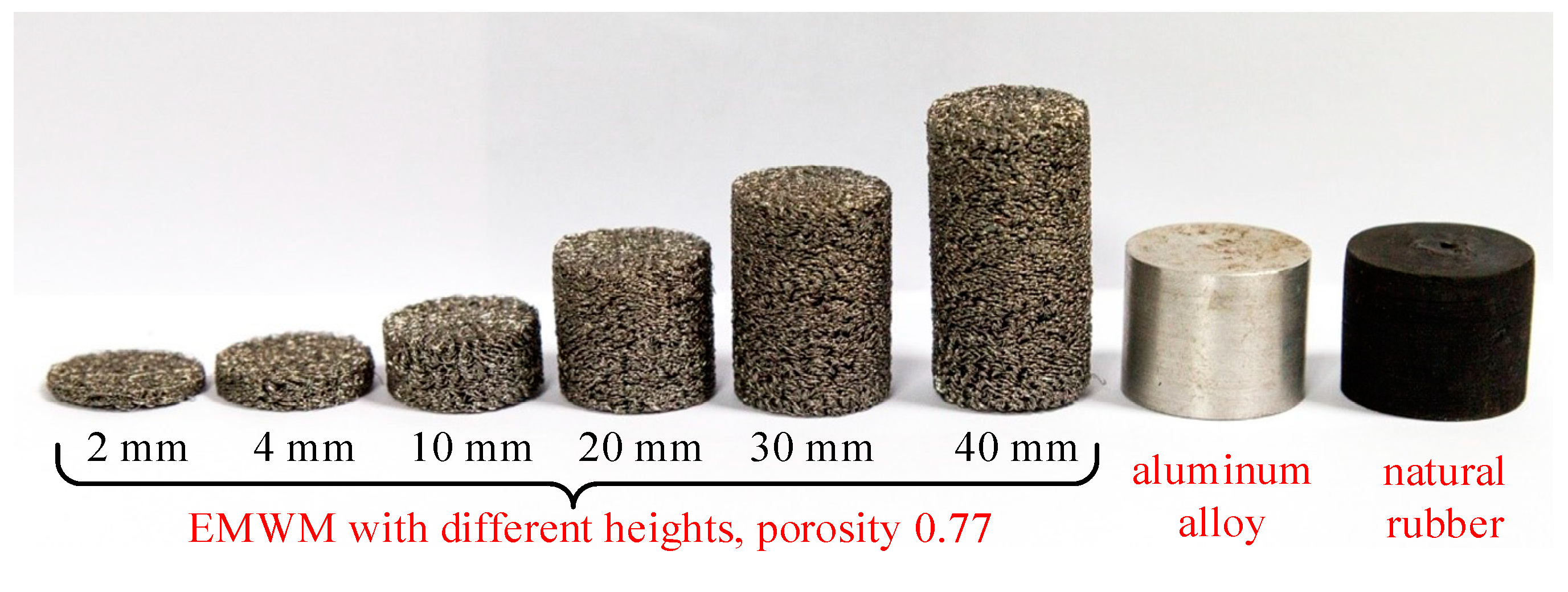

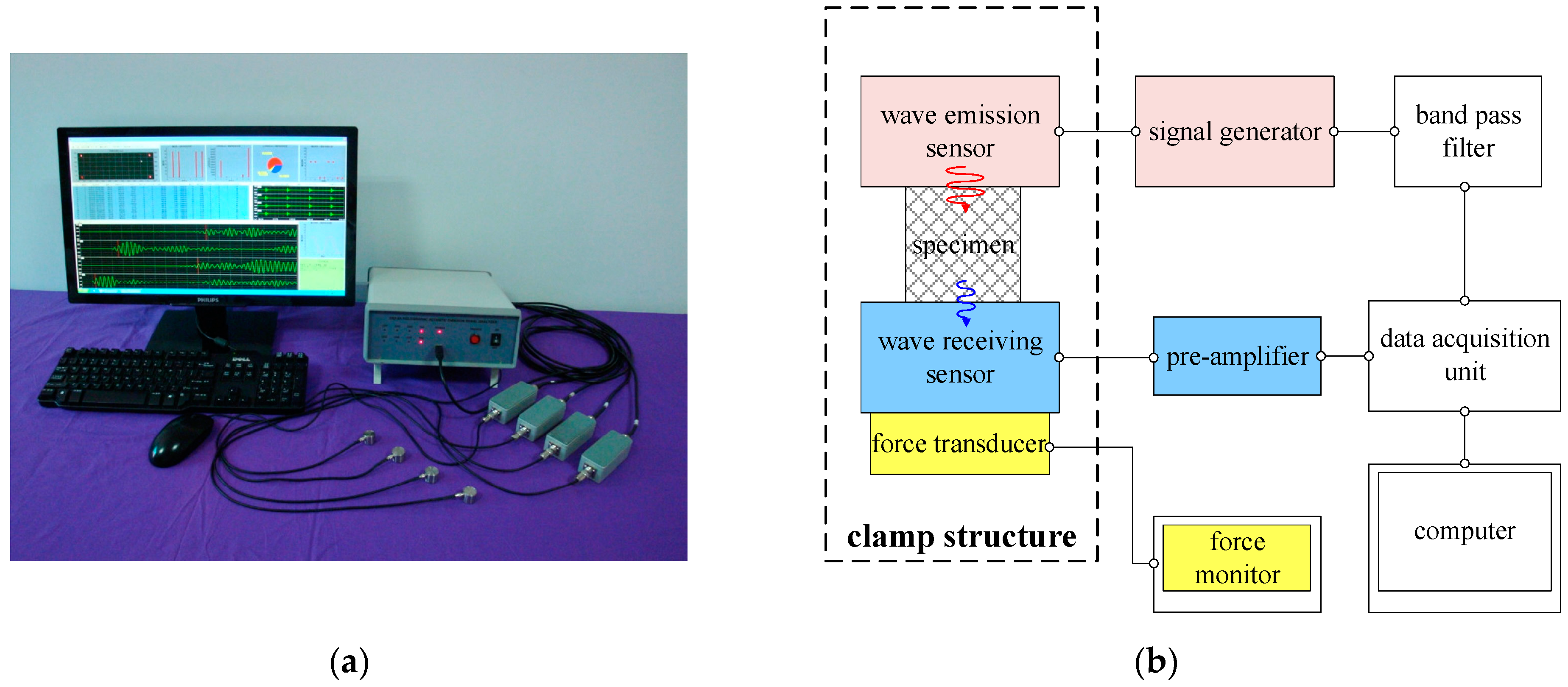

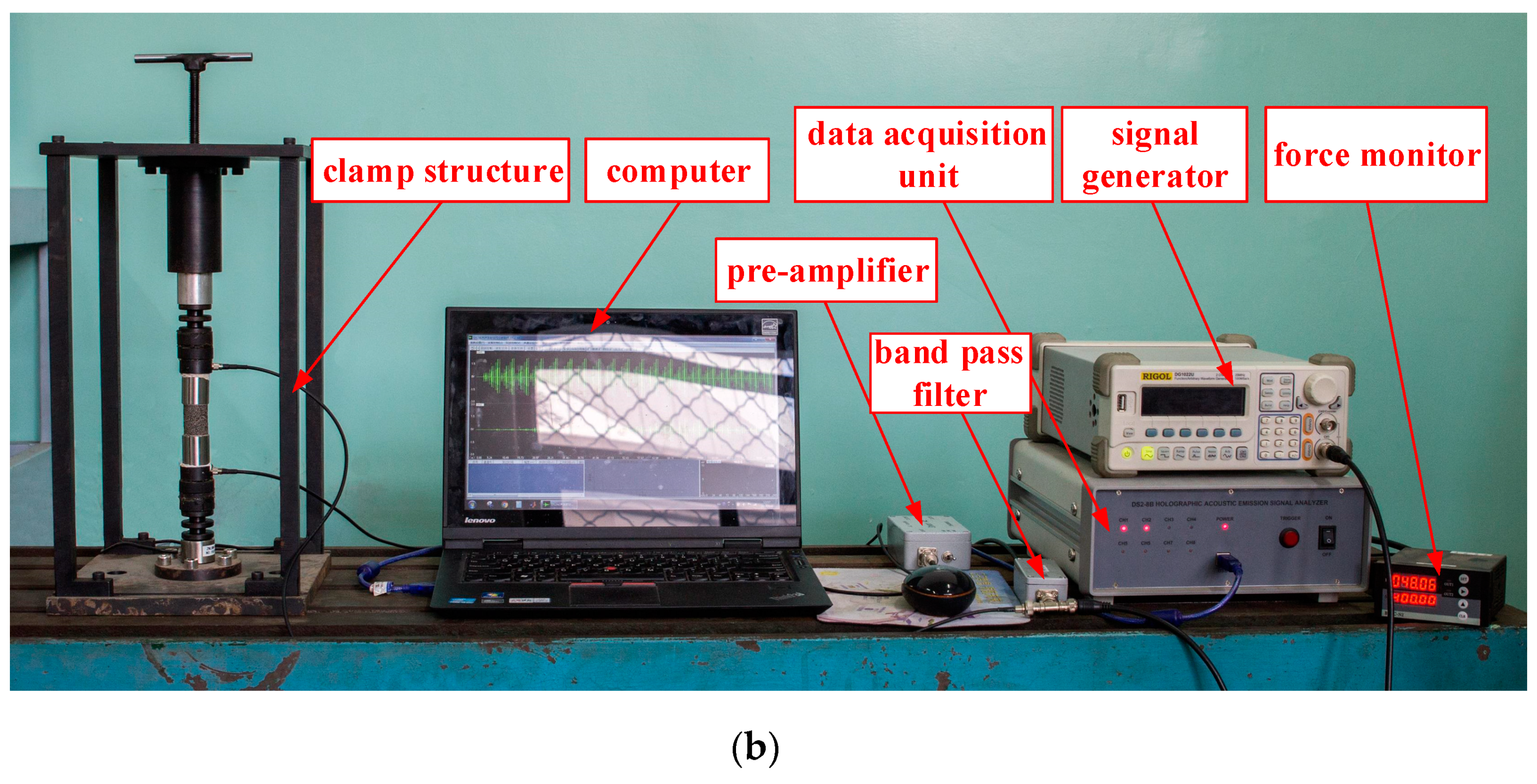

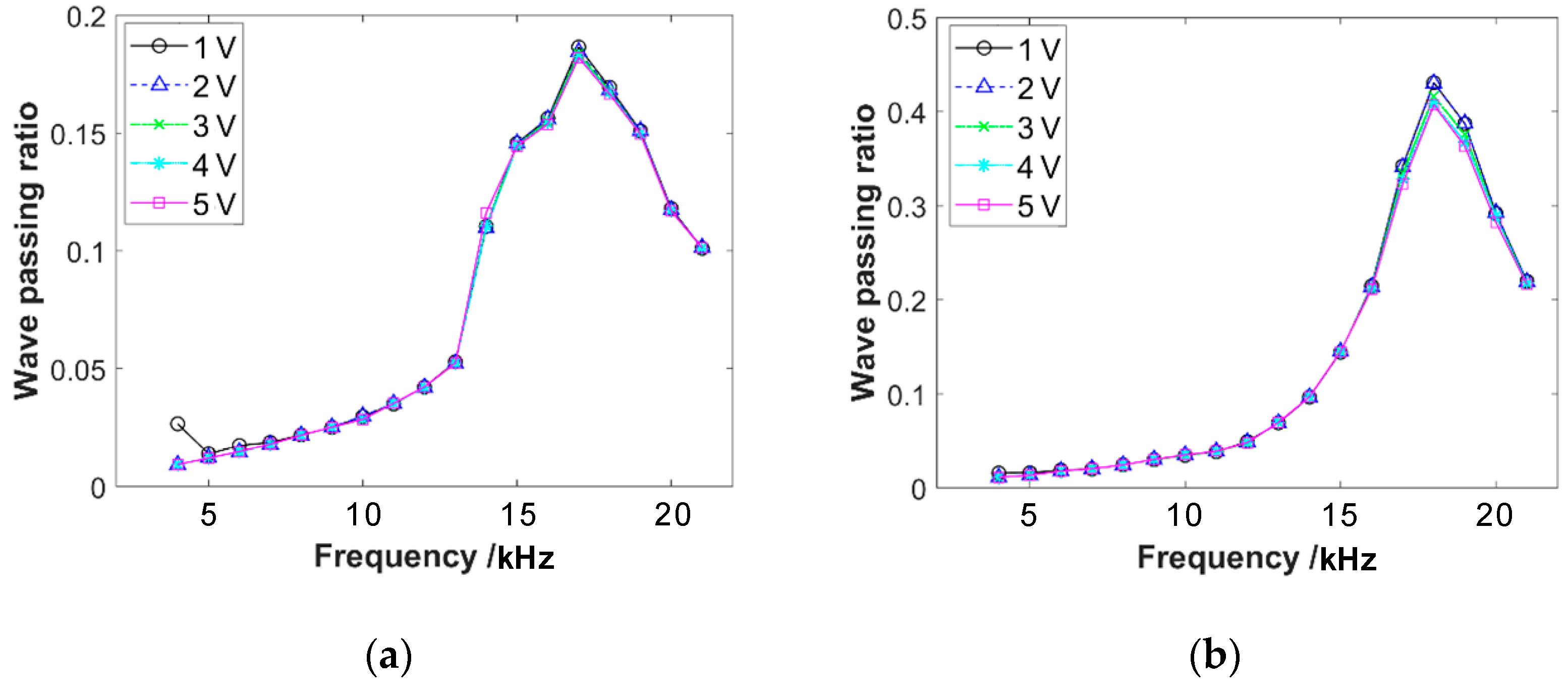
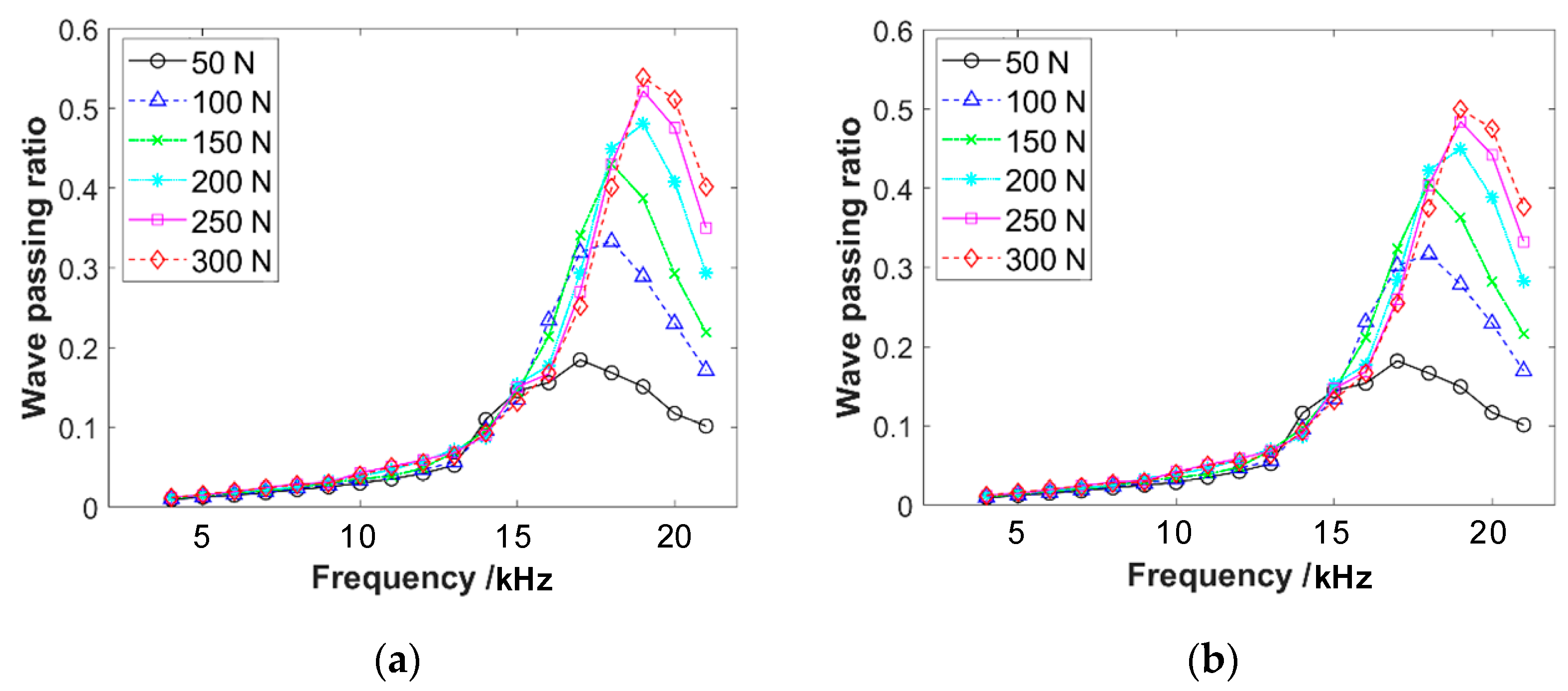
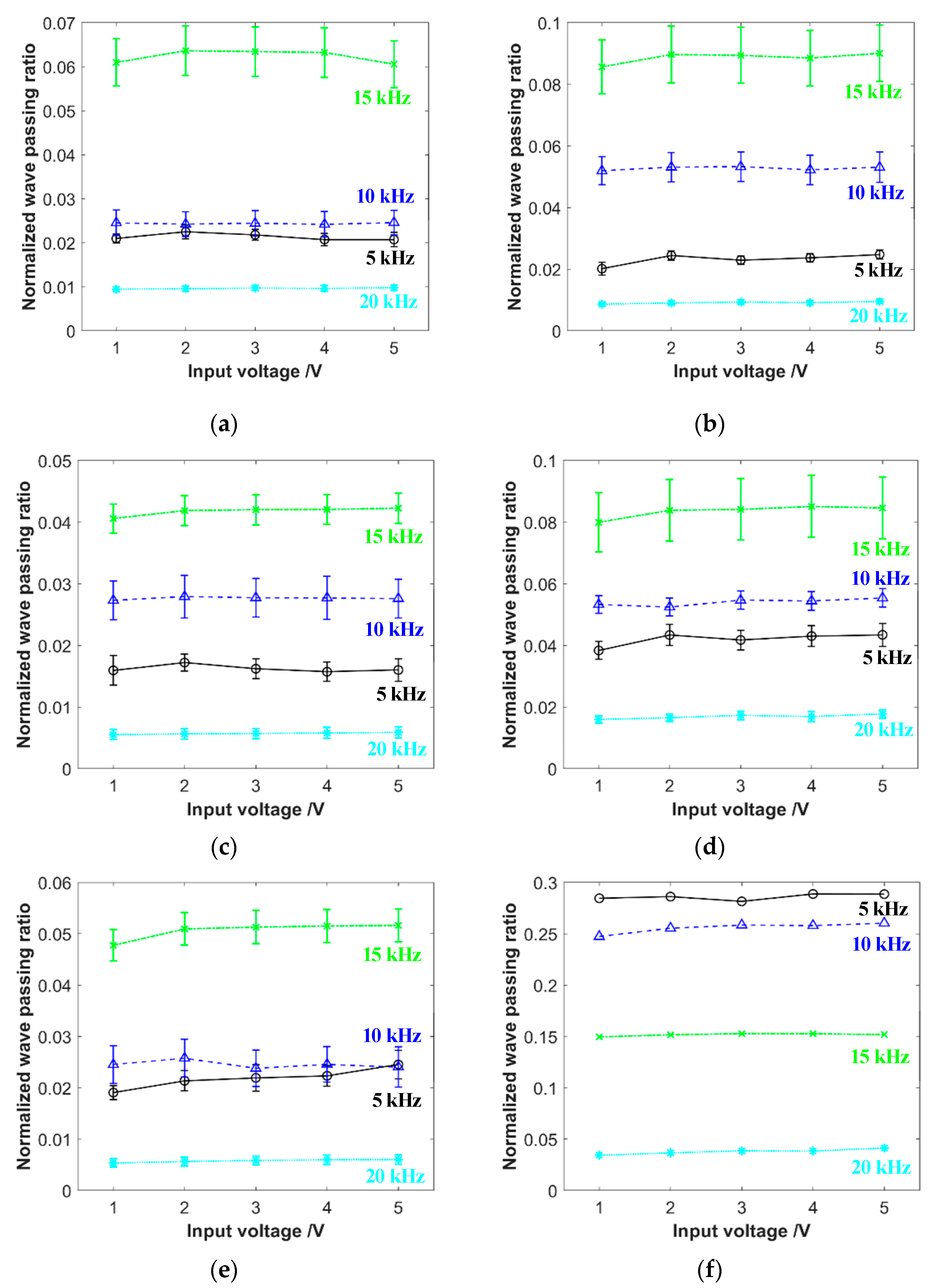
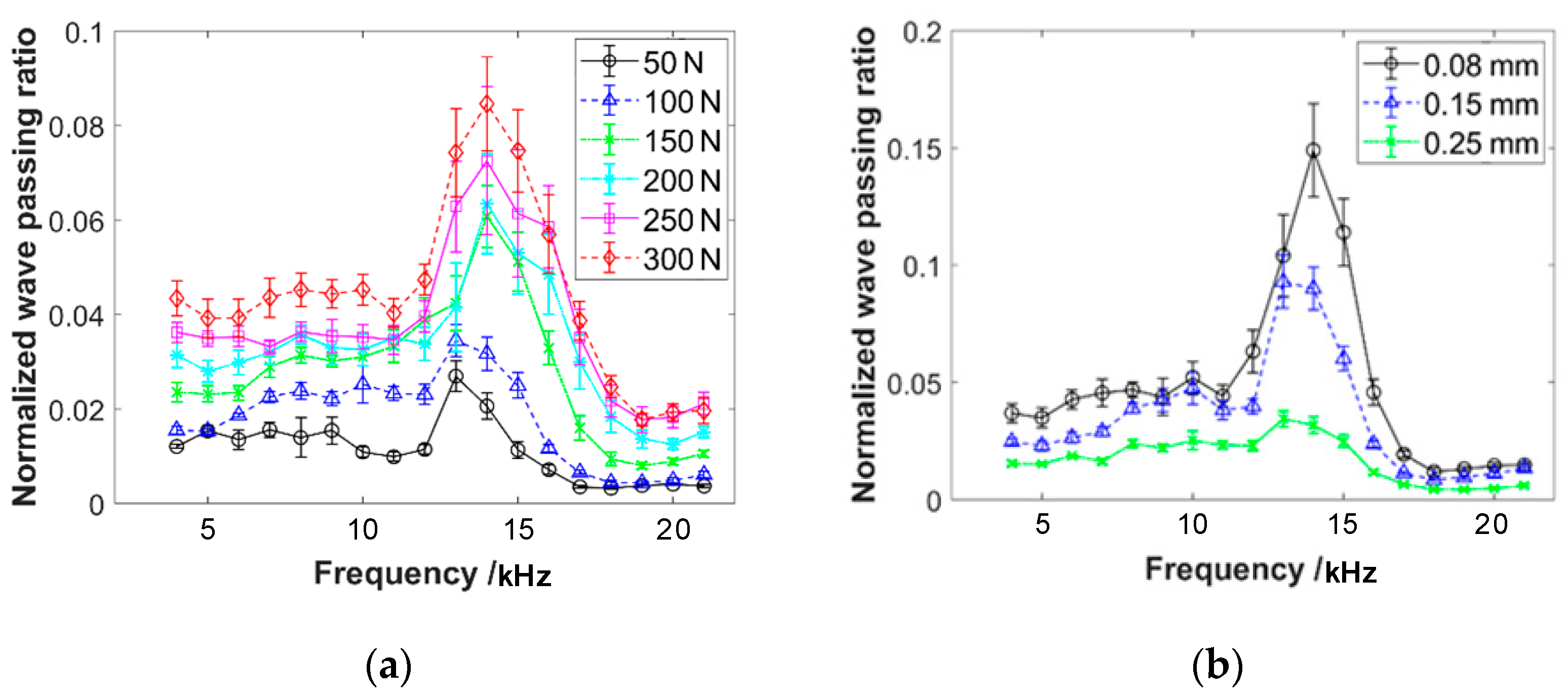
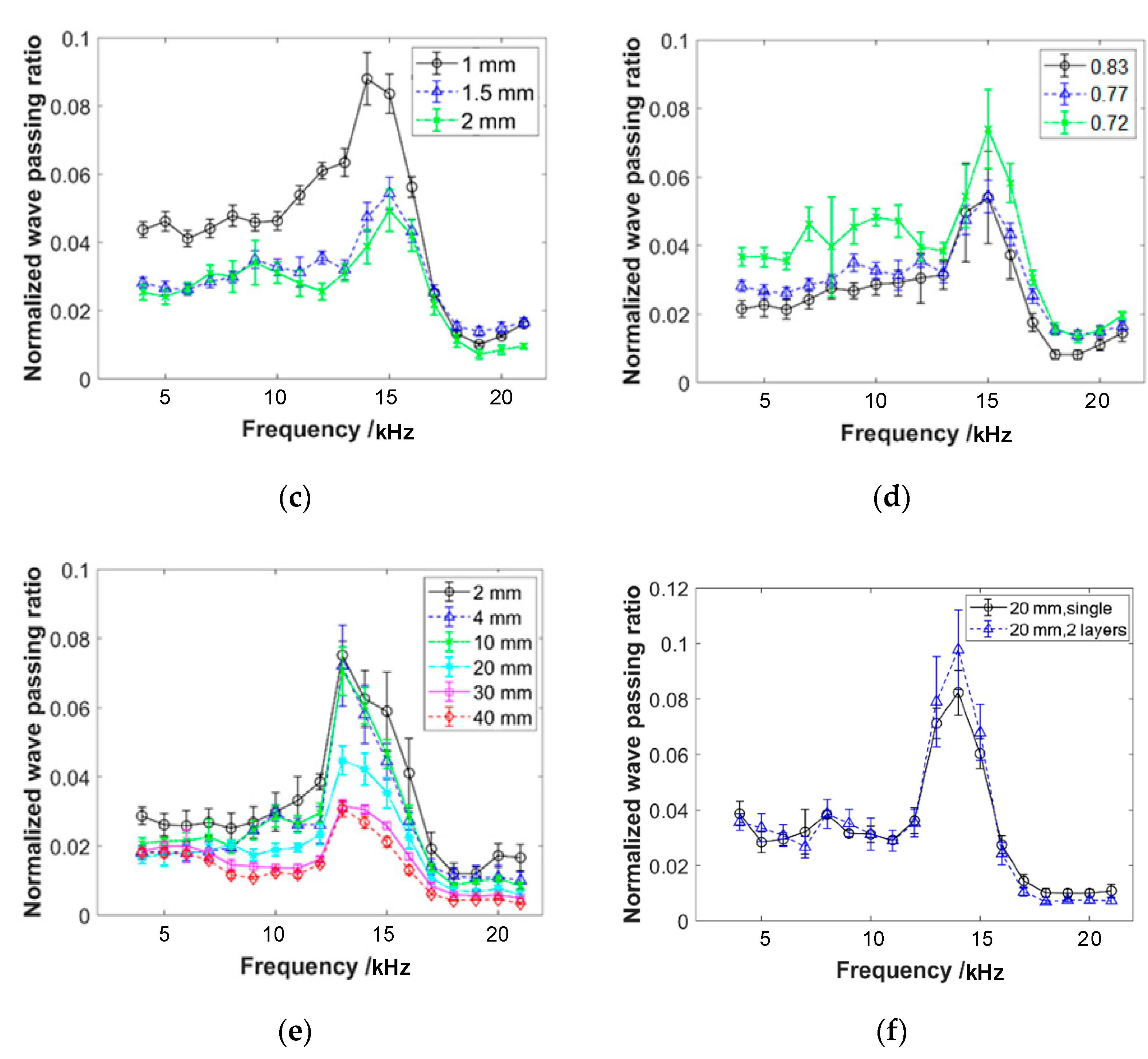
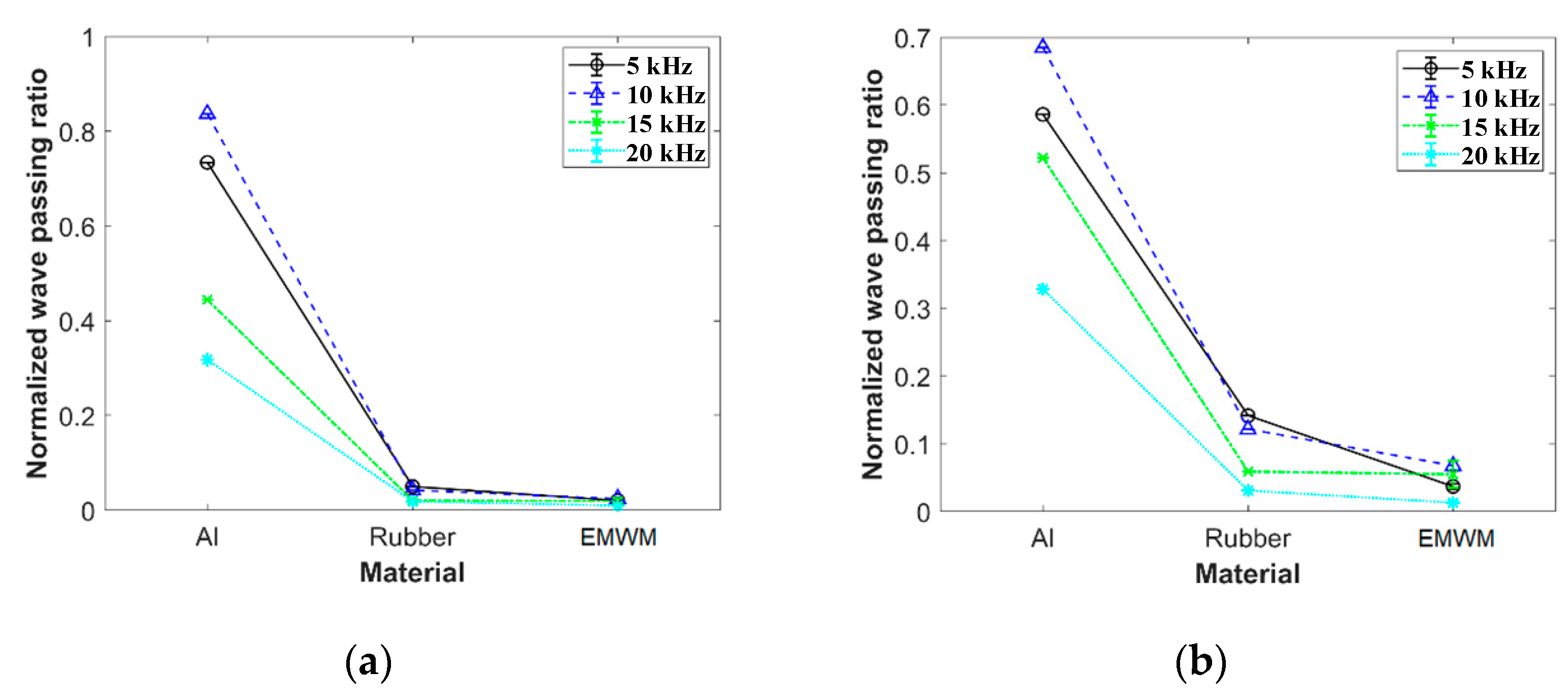
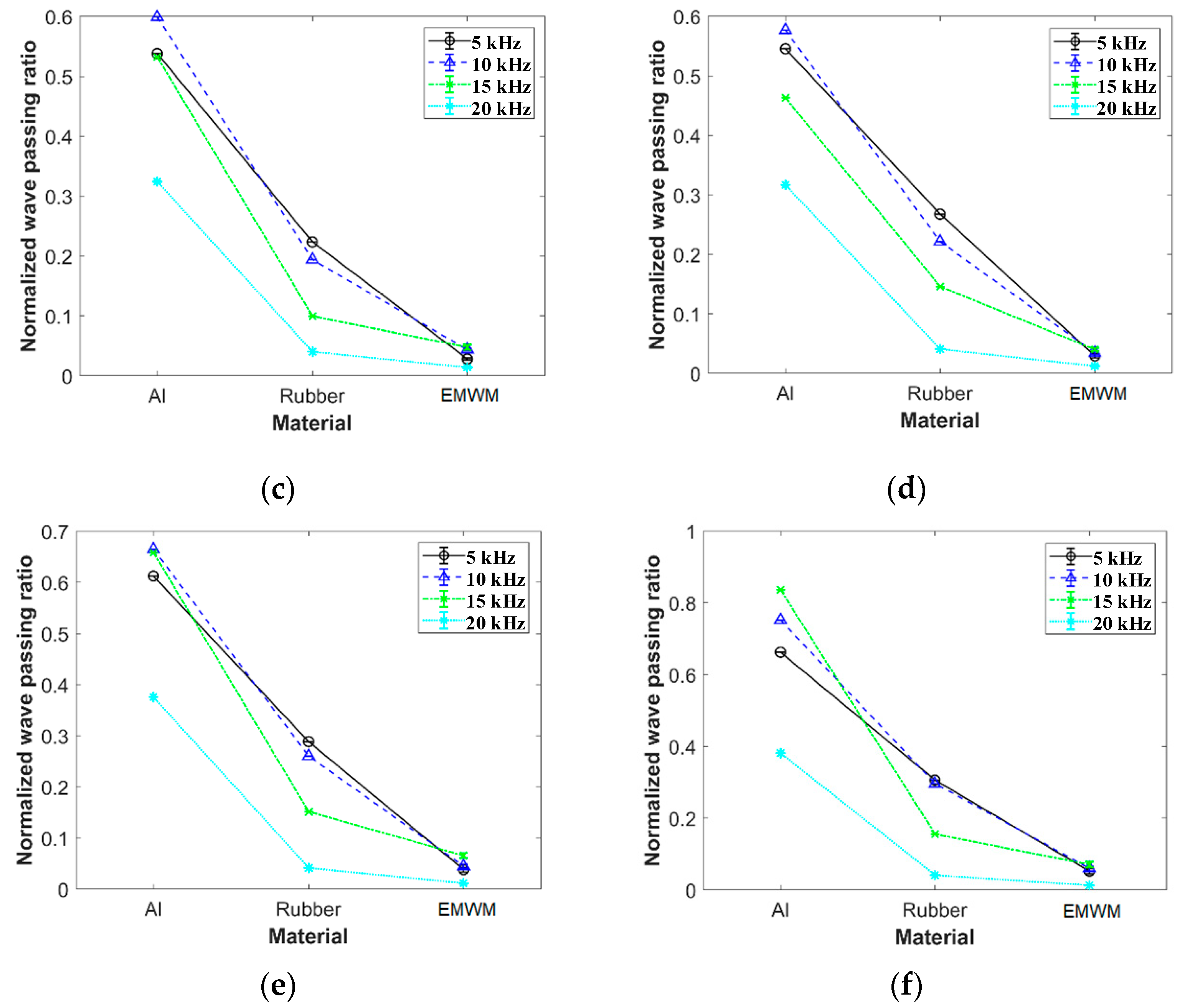

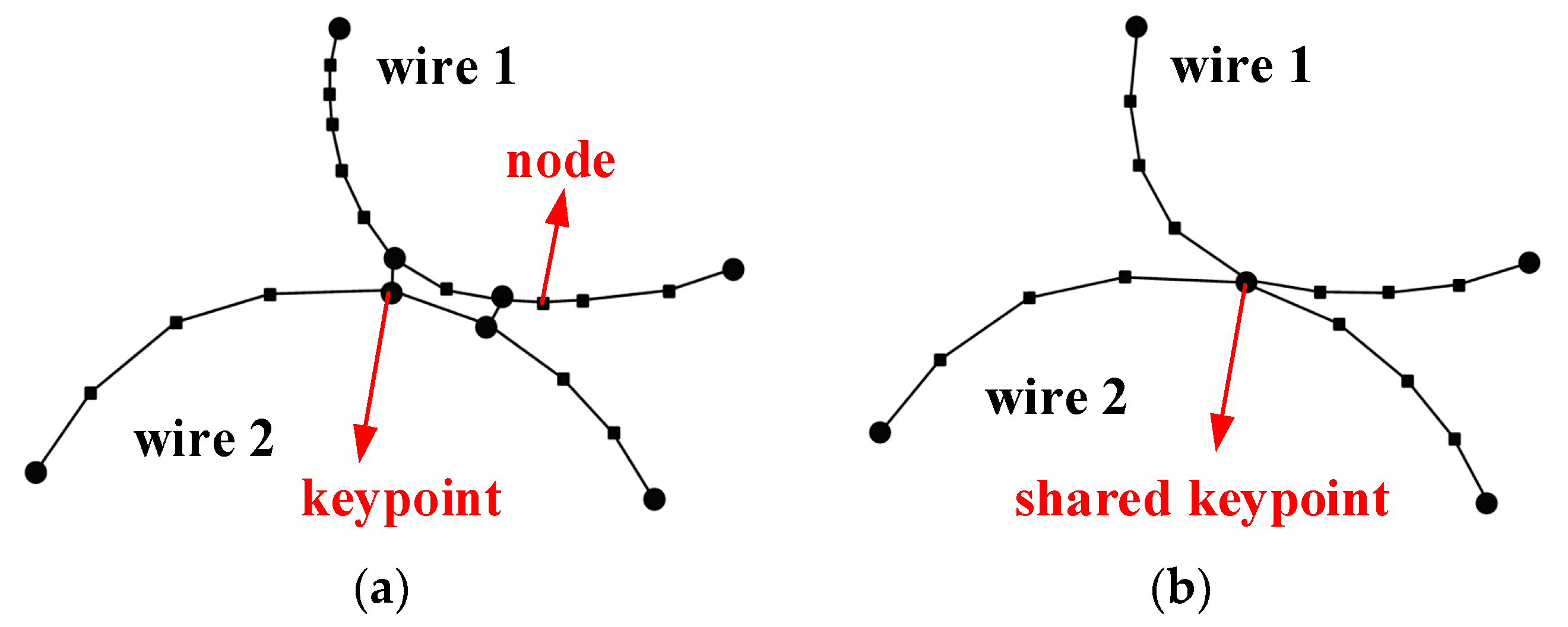
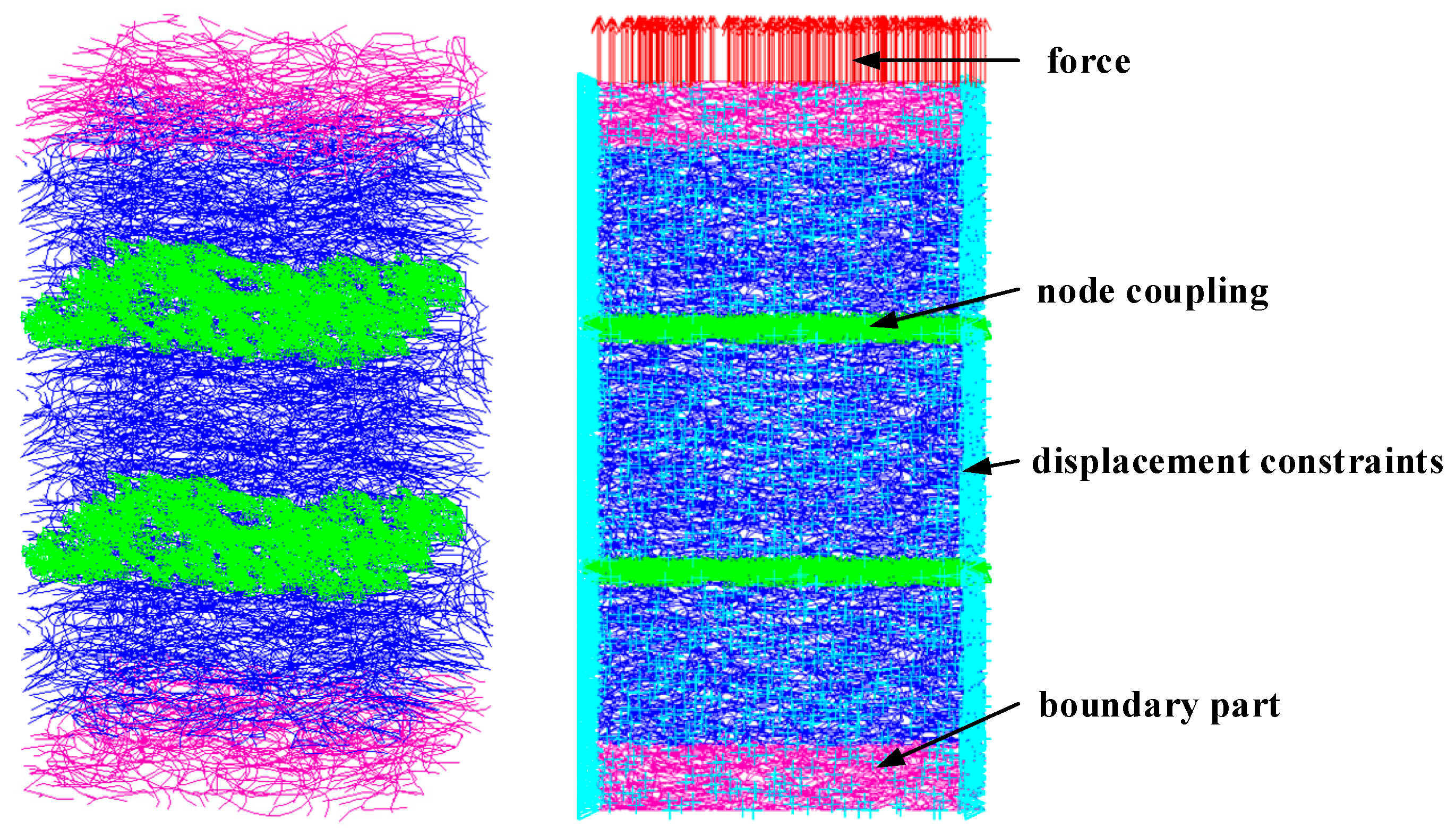

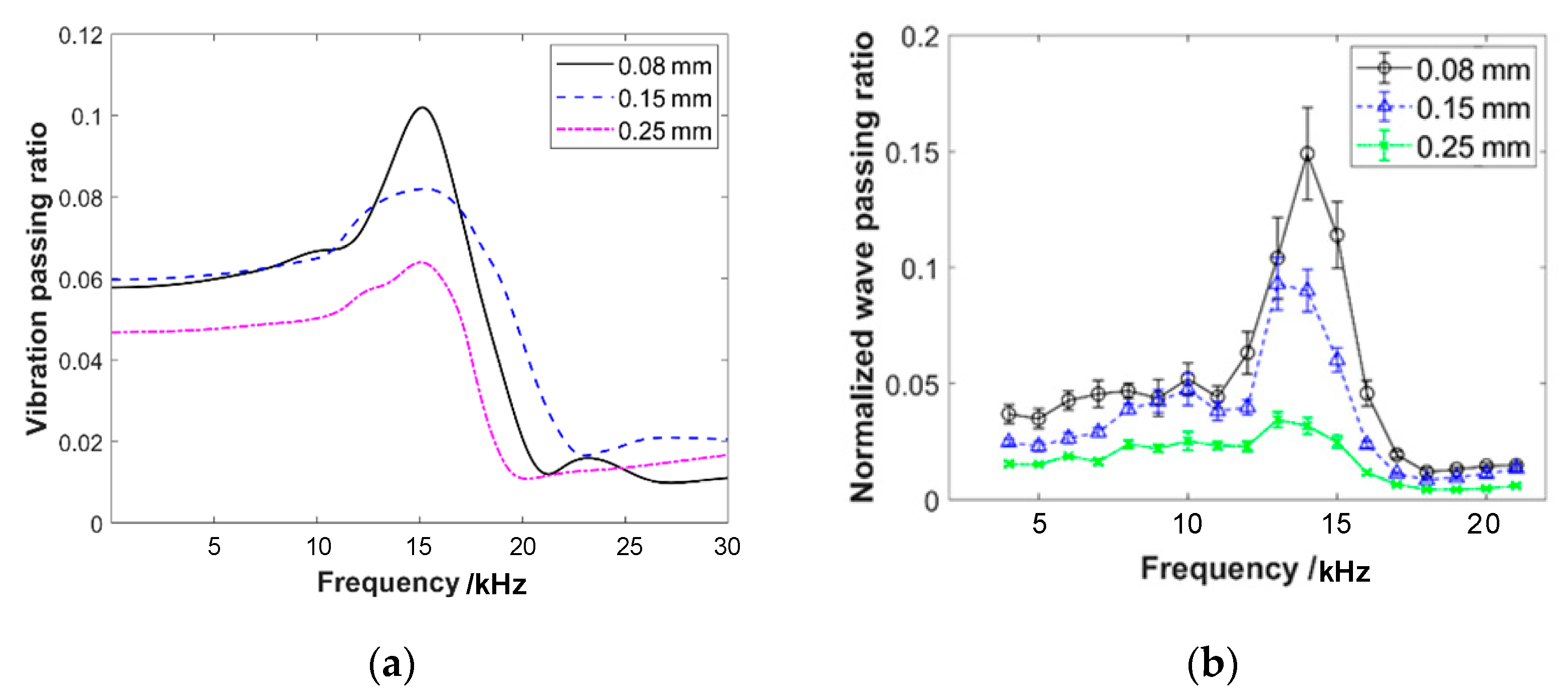
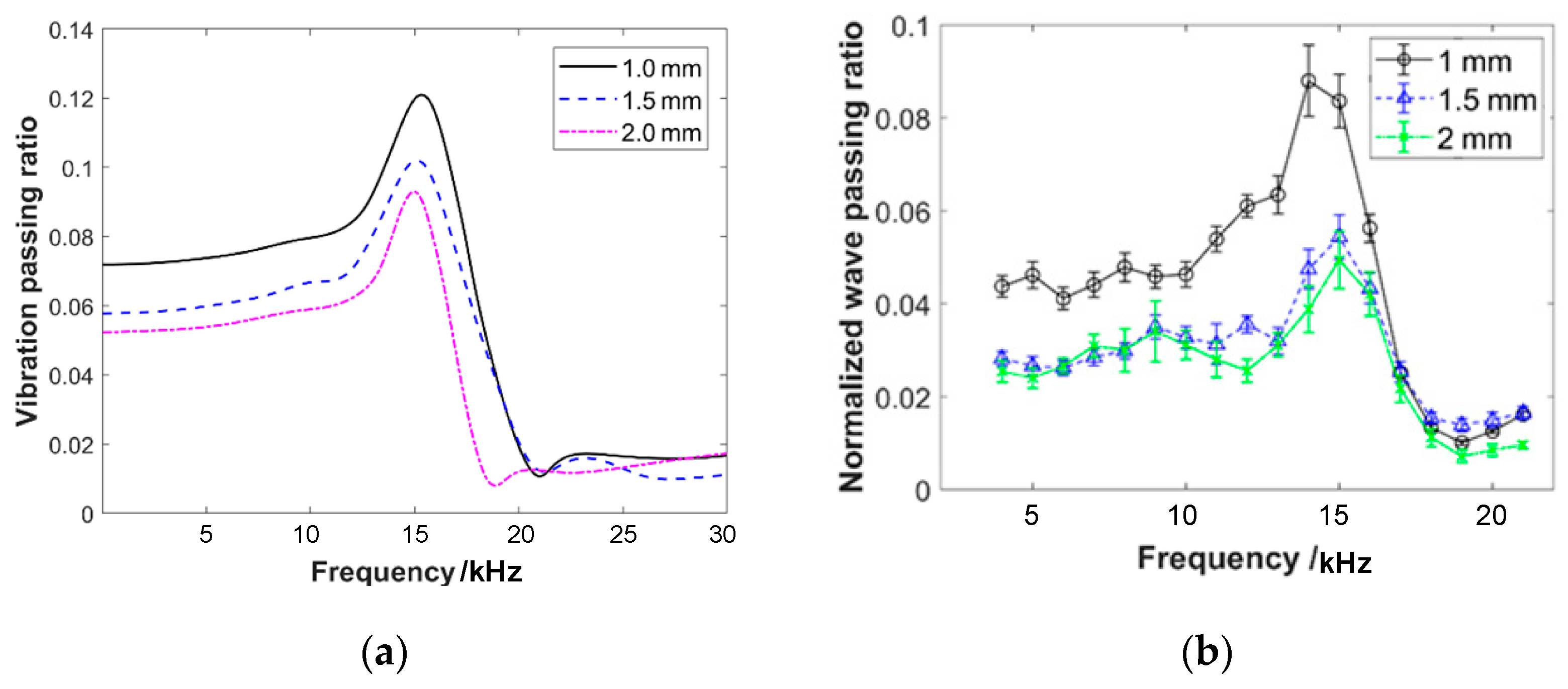
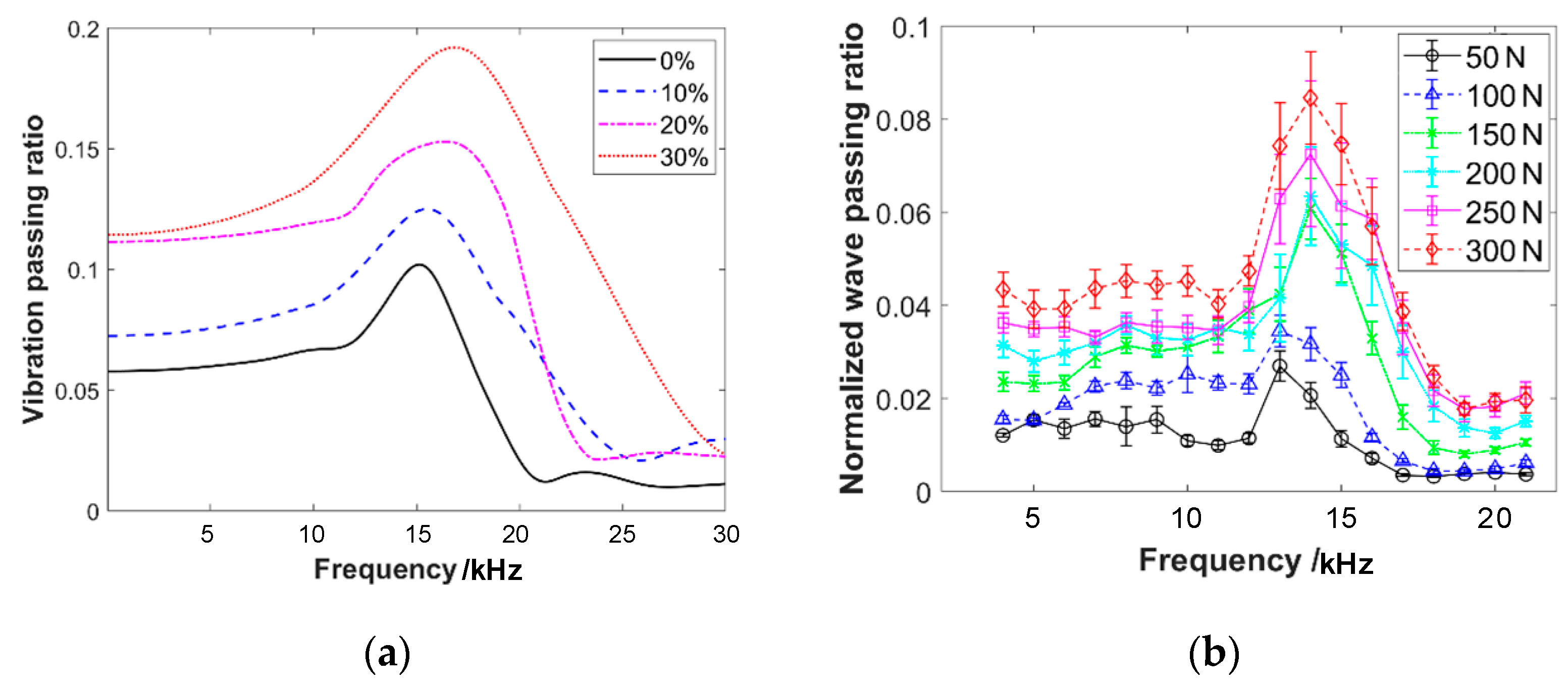
Disclaimer/Publisher’s Note: The statements, opinions and data contained in all publications are solely those of the individual author(s) and contributor(s) and not of MDPI and/or the editor(s). MDPI and/or the editor(s) disclaim responsibility for any injury to people or property resulting from any ideas, methods, instructions or products referred to in the content. |
© 2023 by the authors. Licensee MDPI, Basel, Switzerland. This article is an open access article distributed under the terms and conditions of the Creative Commons Attribution (CC BY) license (https://creativecommons.org/licenses/by/4.0/).
Share and Cite
Ma, Y.; Liang, T.; Wang, Y.; Zhang, Q.; Hong, J. Experimental Investigation of Wave Propagation Characteristics in Entangled Metallic Wire Materials by Acoustic Emission. Materials 2023, 16, 4723. https://doi.org/10.3390/ma16134723
Ma Y, Liang T, Wang Y, Zhang Q, Hong J. Experimental Investigation of Wave Propagation Characteristics in Entangled Metallic Wire Materials by Acoustic Emission. Materials. 2023; 16(13):4723. https://doi.org/10.3390/ma16134723
Chicago/Turabian StyleMa, Yanhong, Tianyu Liang, Yongfeng Wang, Qicheng Zhang, and Jie Hong. 2023. "Experimental Investigation of Wave Propagation Characteristics in Entangled Metallic Wire Materials by Acoustic Emission" Materials 16, no. 13: 4723. https://doi.org/10.3390/ma16134723
APA StyleMa, Y., Liang, T., Wang, Y., Zhang, Q., & Hong, J. (2023). Experimental Investigation of Wave Propagation Characteristics in Entangled Metallic Wire Materials by Acoustic Emission. Materials, 16(13), 4723. https://doi.org/10.3390/ma16134723






